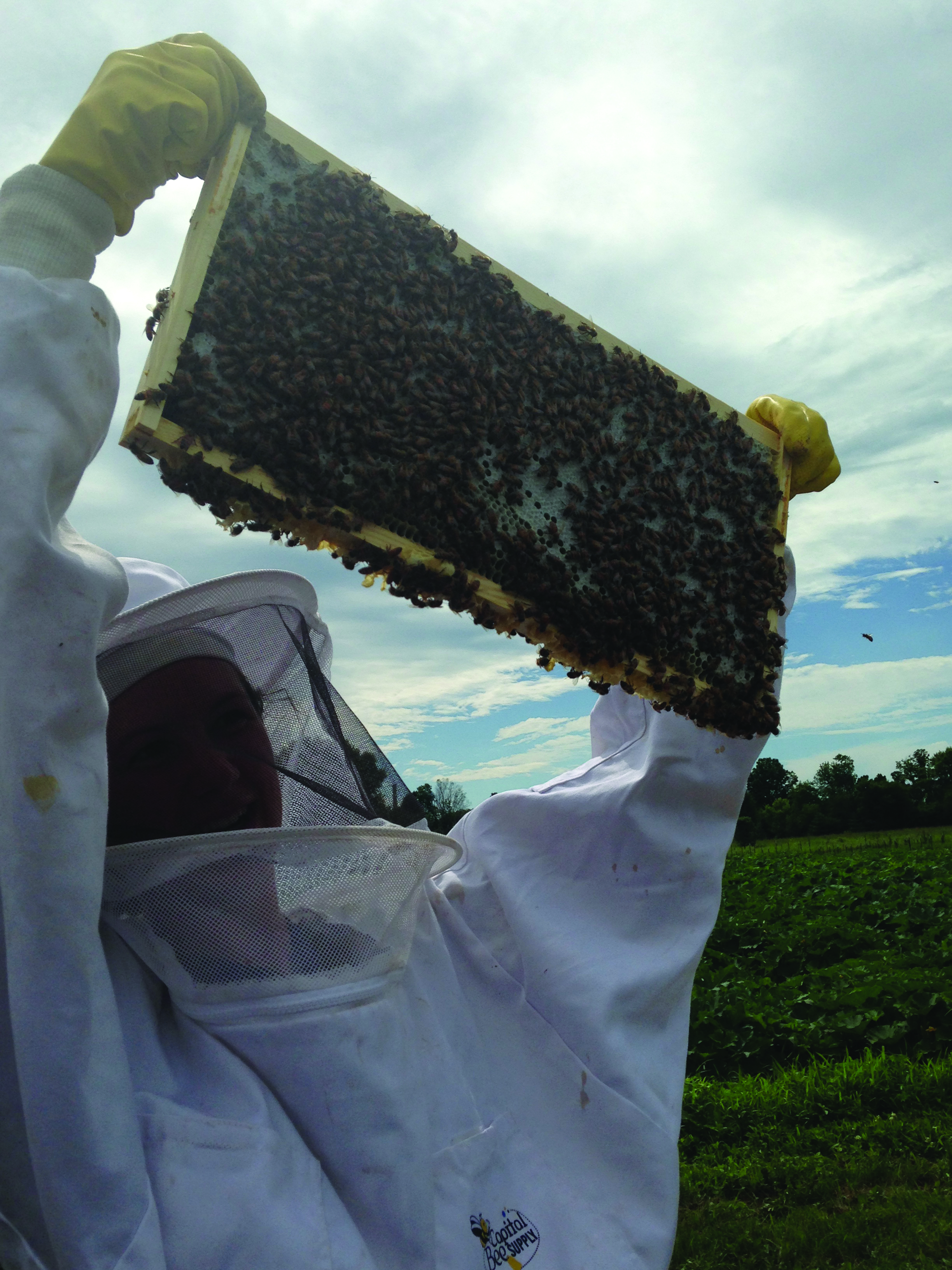
By Annali Smucker-Bryan
Community GroundWorks
After a couple of years on hiatus, Troy Community Farm has reintroduced bee hives. Why raise honeybees? One of the most important reasons is pollination. Many crops would not produce any fruit if it weren’t for pollinators. The peach tree needs at least seven bees to visit each flower to produce a decent peach. Each squash flower needs 17 or more visits to produce what you throw on your grill and eat in one sitting.
According to a Cornell University study, honeybee pollination in U.S. agriculture is worth more than $14 billion annually. We need the honeybee. For us at Troy, the beautiful restored prairie and close neighbor beekeepers provide us with plenty of native pollinators.
Each year interns come to the farm looking for knowledge on how to start their own farms. By raising bees at Troy, we not only increase the local pollinator population, we also become the first steppingstone for many interns to appreciate these amazing creatures and own hives of their own.
By the way, honey and beeswax are pretty great byproducts, too. This year we will not be focusing on honey production, though. Instead we will be working to build hives strong enough to survive a Wisconsin winter.
Let me introduce our hives, Beatrice and Susan Anthony. Both hives started as packages sent from California. They arrived in small wooden and wire cages weighing about 3 pounds. Each contained approximately 10,000 bees, with a queen in a separate smaller cage surrounded by the other bees. We hived the bees May 11 and have been doing weekly inspections to note progress and learn all we can.
Beatrice is thriving. We have already added a third deep hive body box. The queen has a great laying pattern. (Did you know at the height of the season a good queen in a strong hive can lay more than 1,000 eggs a day?) And the workers are building lots of wax comb. We have stopped feeding them sugar syrup so now everything they bring in is from the abundance of the farm, restored prairie, and other blooming flowers within a two-mile radius.
Susan Anthony is our problem child. Since the beginning, this hive was slower to build up. Within a few weeks of hiving, the queen died. This could have happened for a number of reasons. According to other local beekeepers, it is not uncommon for bees to decide they need a new queen if a queen is damaged, has weak pheromones or for other reasons. The queen may also have been injured during a hive inspection.
Whatever the reason, Susan Anthony was in need of a new queen. A beekeeper has two choices when this happens: buy and introduce a new queen or let the bees raise their own. We opted to let Susan Anthony try to raise its own queen. After 20 days of not opening the hive, we were relieved to see eggs in the hive, which means Susan Anthony has successfully replaced its queen. We have since added a second hive body onto Susan Anthony.
With both hives now on track, we are hopeful that Beatrice and Susan Anthony will continue to build up over the next few months to prepare themselves for their first Wisconsin winter.